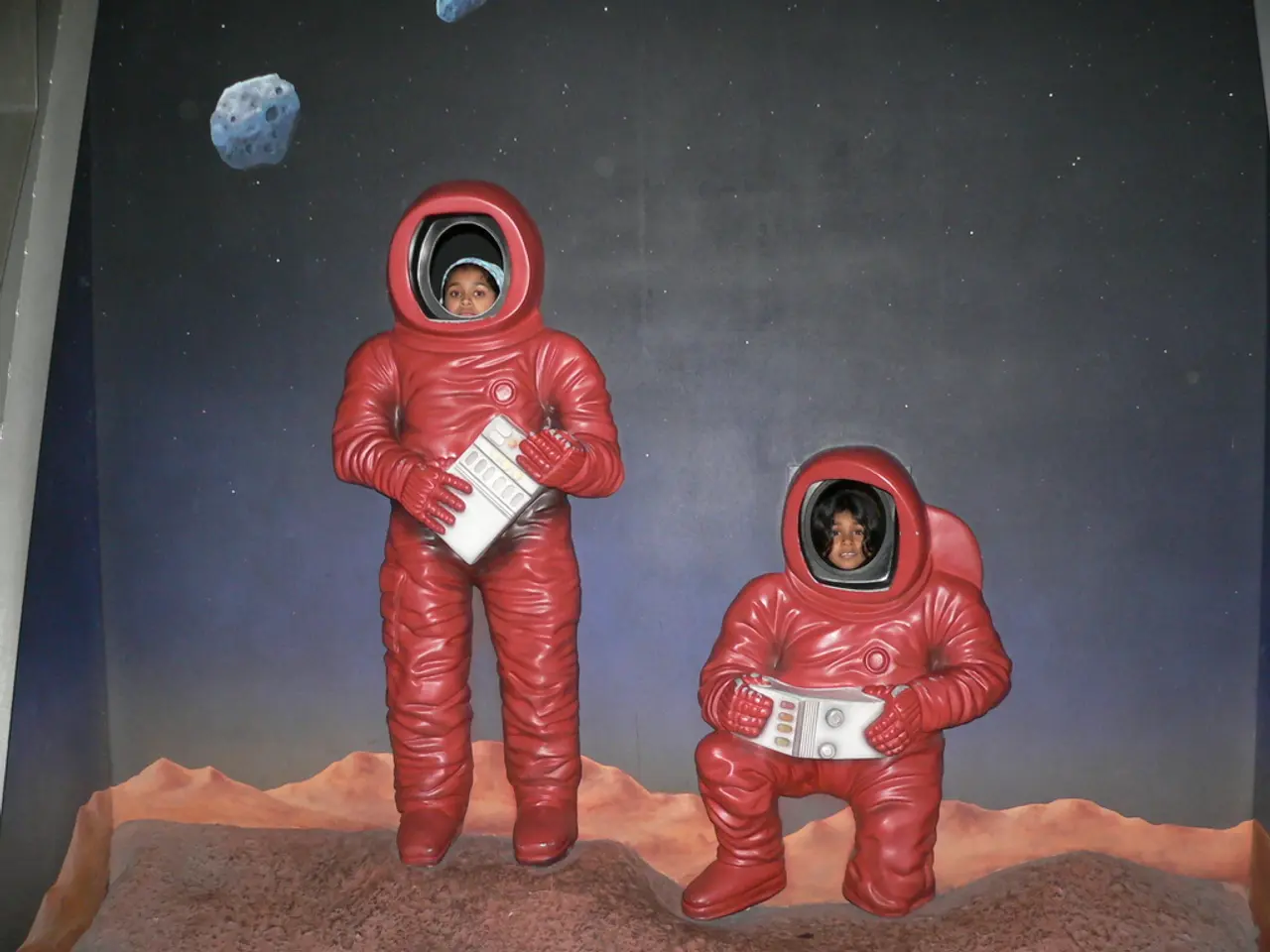Russia to Initiate Release of 75 Mice and 1,000 Fruit Flies on August 20 for Web-Based Research
On August 20, the Bion-M No. 2 biosatellite is set to be launched from the Baikonur Cosmodrome in Kazakhstan, marking a significant step forward in space research. This mission, aboard a Soyuz-2.1b rocket, will last for 30 days and is being hailed as a "Noah's Ark" due to the diverse range of living organisms it carries.
The Bion-M No. 2 mission is primarily focused on investigating the biological effects of spaceflight conditions, particularly microgravity and intense cosmic radiation, on living organisms. These organisms include mice, fruit flies, plants, and microorganisms. The mission will be in a pole-to-pole orbit, increasing cosmic radiation by at least an order of magnitude compared to the previous Bion-M No. 1 mission, better simulating the harsh radiation environment astronauts face on lunar or interplanetary missions.
Mice were chosen for this mission due to their genetic similarity to humans, short life cycle, and increased radiation sensitivity. Some of the mice have been genetically modified to study the mechanisms of radiation damage and immune response in detail. Additionally, the payload includes over 1,000 fruit flies, cell cultures, microorganisms, and plant seeds.
The mission also includes lunar simulants - dust and rocks mimicking high-latitude moon surface materials. These lunar simulants will be evaluated after their return to Earth to study their radiation and vacuum effects, which could provide valuable insights into moon construction ideas.
The data gathered from this mission is crucial for preparing humans for long-distance spaceflight. It could aid the development of adjusted requirements for astronaut medical support and provide information on biological effects of spaceflight applicable to medicine on Earth. The mission could also provide operational groundwork for extended missions beyond low Earth orbit, helping to calibrate support systems and understand biological adaptations needed for longer duration stays on the Moon or Mars.
Roscosmos, the Russian space agency, is responsible for the mission. More than 10 experiments will be conducted by scientists from IKI and IMBP on the biosatellite. Real-time data on the condition of the mice will be received using special cameras, sensors, and implanted chips. After the mice return from the mission, researchers will study their adaptation to Earth and readaptation post-flight.
In summary, the Bion-M No. 2 mission serves as a vital biological and materials science platform that generates knowledge essential for protecting and sustaining humans on future lunar and deep-space missions. It is a significant step forward in our understanding of space medicine and the challenges faced by humans during long-distance space travel.
- The Bion-M No. 2 mission, set to be launched on August 20, is a significant milestone in space research, particularly in the realm of space medicine and biology.
- As part of this mission, a diverse range of living organisms, including mice, fruit flies, plants, and microorganisms, will be subjected to spaceflight conditions to investigate the biological effects of microgravity and intense cosmic radiation.
- The data acquired from this mission will be instrumental in preparing humans for long-distance space travel, as it could aid in adjusting astronaut medical support and provide insights into biological effects of spaceflight applicable to terrestrial medicine.
- In addition to living organisms, the mission also includes lunar simulants - dust and rocks mimicking high-latitude moon surface materials, for study of radiation and vacuum effects on lunar construction ideas.
- The Bion-M No. 2 mission will help calibrate support systems and understand biological adaptations needed for longer duration stays on the Moon or Mars, serving as a crucial stepping stone for human exploration of deep space.




